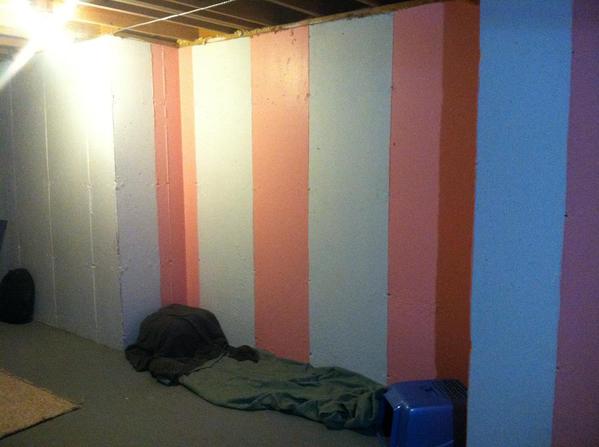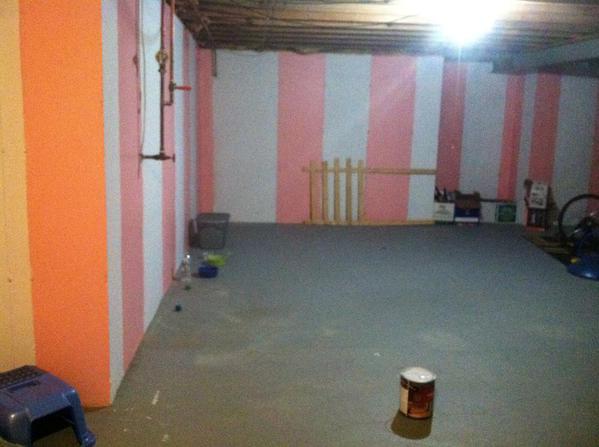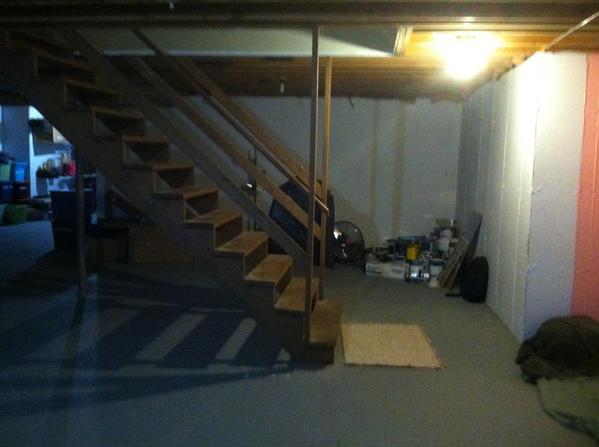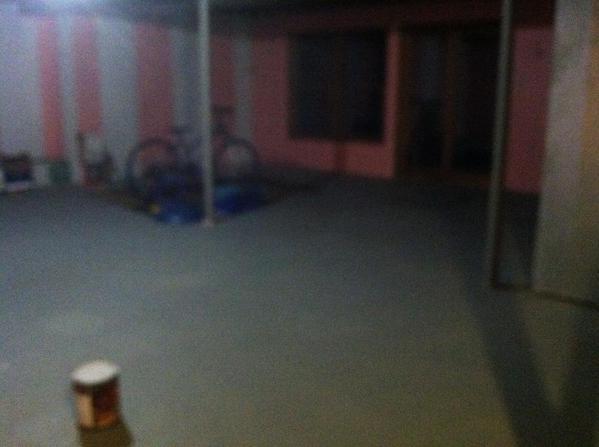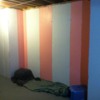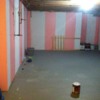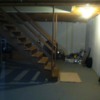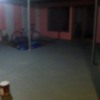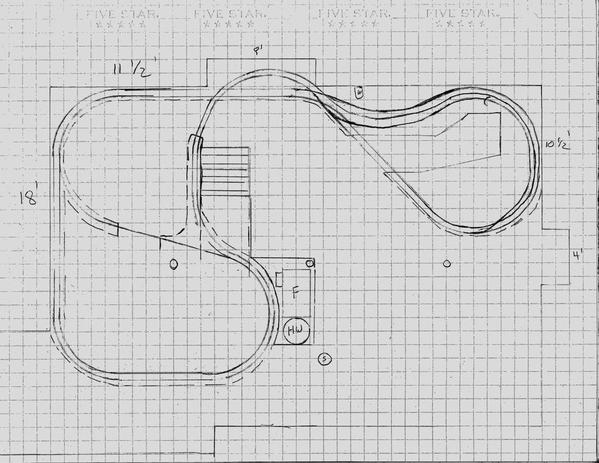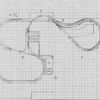Originally Posted by Fridge56Vet:
Yet another reminder why Killz was invented, I see.  Looks interesting. How wide are the door and tall window, and how far is the window from the wall? Are you able/willing to put table space in front of said window? I assume the door needs to be unobstructed. How much space can you use behind the furnace/water heater between the stairs & 18' wall?
Looks interesting. How wide are the door and tall window, and how far is the window from the wall? Are you able/willing to put table space in front of said window? I assume the door needs to be unobstructed. How much space can you use behind the furnace/water heater between the stairs & 18' wall?
My first though was an around the wall layout w/a turn-around in the corner w/the window, running around in front of the stairs and the second turn-around behind the furnace next to (but not obstructing) the opening to the storage area. I was thinking I'd leave the storage area open as well as the space along the "door" wall & around to the stairs. The alcove would allow you to taper the bench work to allow more room at the base of the stairs. Any idea what your turn radii will be? Are you thinking traditional O gauge, or more of O scale?
Window is 2 ft from corner - Windows and door basically extend from floor to ceiling and span roughly 10 feet. My initial thought had been to run an around the wall dogbone setup along the length of the 16 1/2' and 25' area with turn outs by the stairs and the windows. But at that time I was thinking smaller diameter curves so the windows would still be somewhat accessible.
My thinking now is much closer to your thoughts. As most of the Rolling Stock and locomotives I'm looking at are scale size - I'm thinking differently. I'm looking at gargraves wood ties, tinplate rails for the track - at O-80 and O-89 for curves- but thinking I could possibly go up to O-89, O-96. Not looking for 100% scale level realism, but closer to it than to traditional.
I was thinking I could use the 18' wall, the 37' wall and alcove, and the first 10 1/2 -15' of the far wall & alcove. Leave the storage room open along with the area in front of the windows, door, and around the mechanical. This would be a good start - and down the line leave me plenty of space I could expand into if that became an option - or it'd leave plenty of room for a man cave space.
This of course would put the water shut off into play. It's 3 feet from the alcove and protrudes 13" into the room.
The pillar beneath the stairs is right at 9'6" from the 18' wall and sits 6' exact from the back of the furnace and water heater. It's 13' 6" back from the 37' wall and 2' in from the stairs. So my initial drawing is a touch off on that one pillar. As far as a pass through under the stairs, it's about 11' from the 37' wall where I'd feel comfortable walking under it - I'm 5'10".




